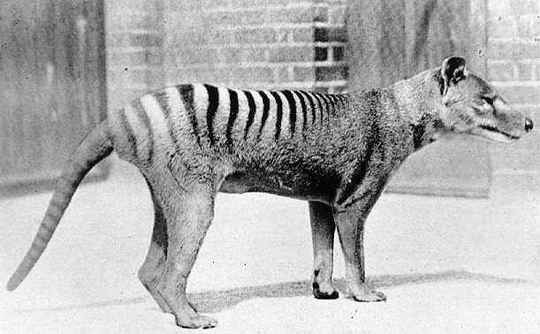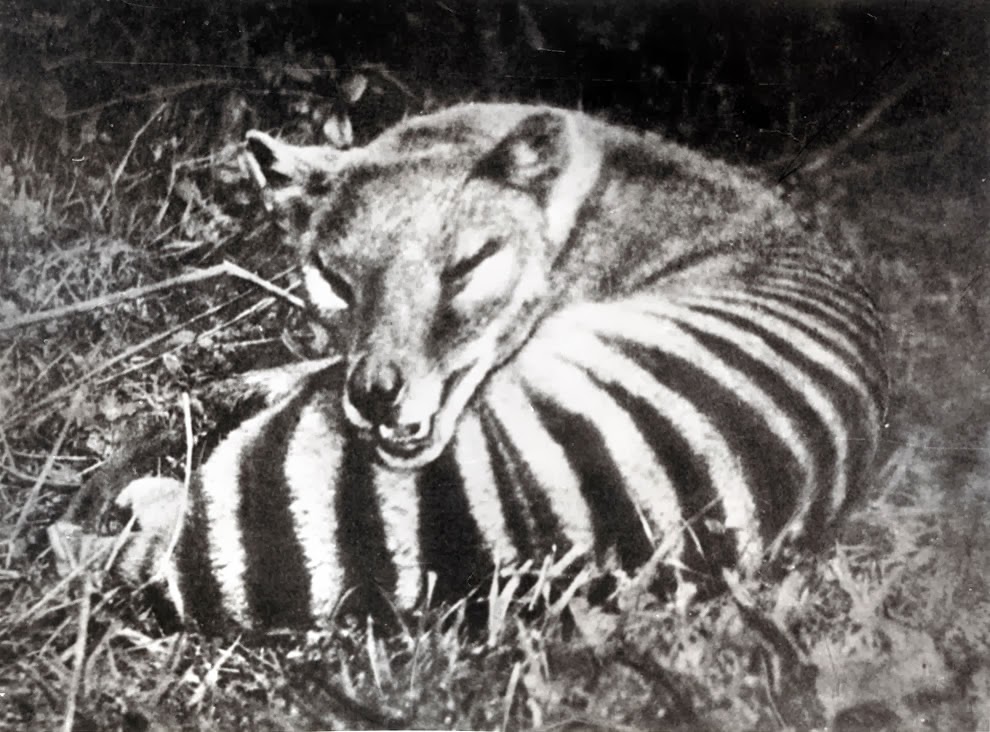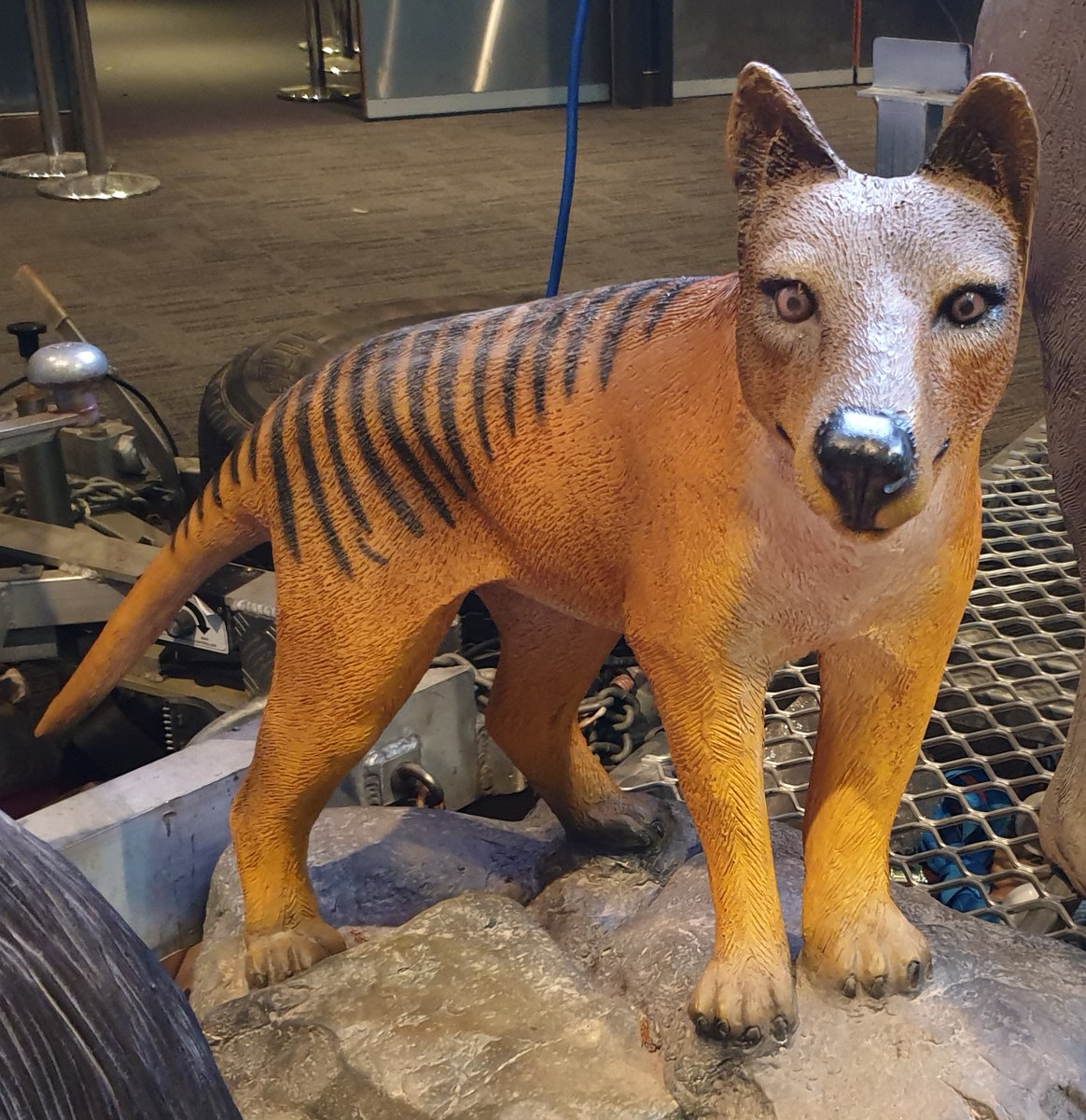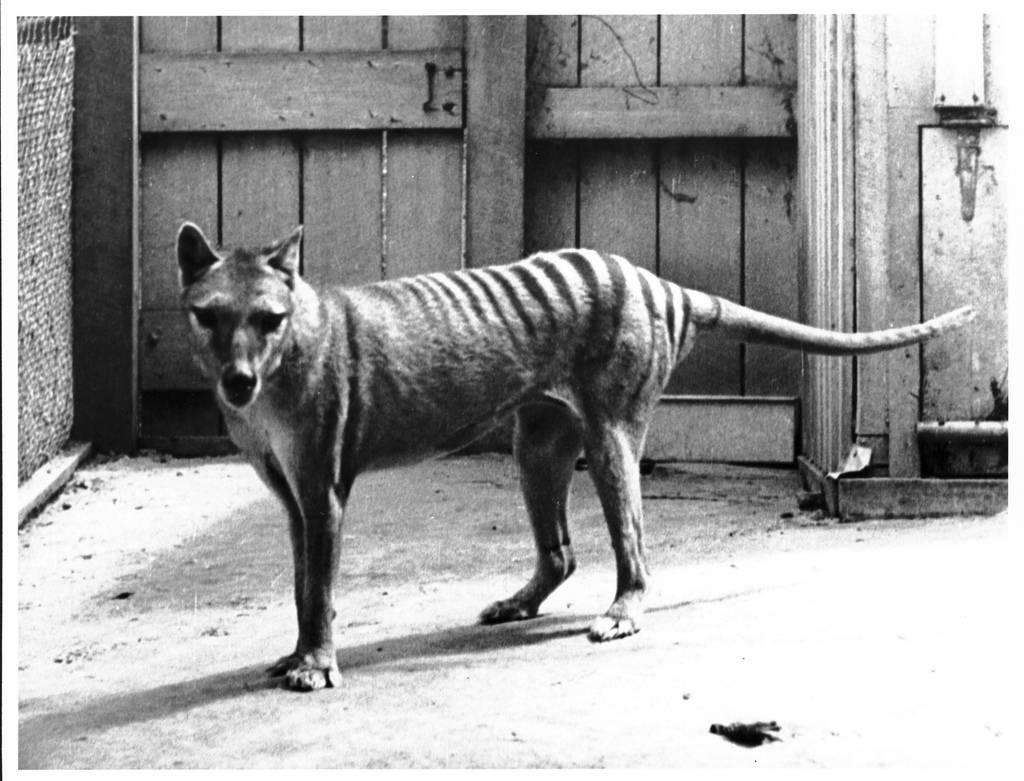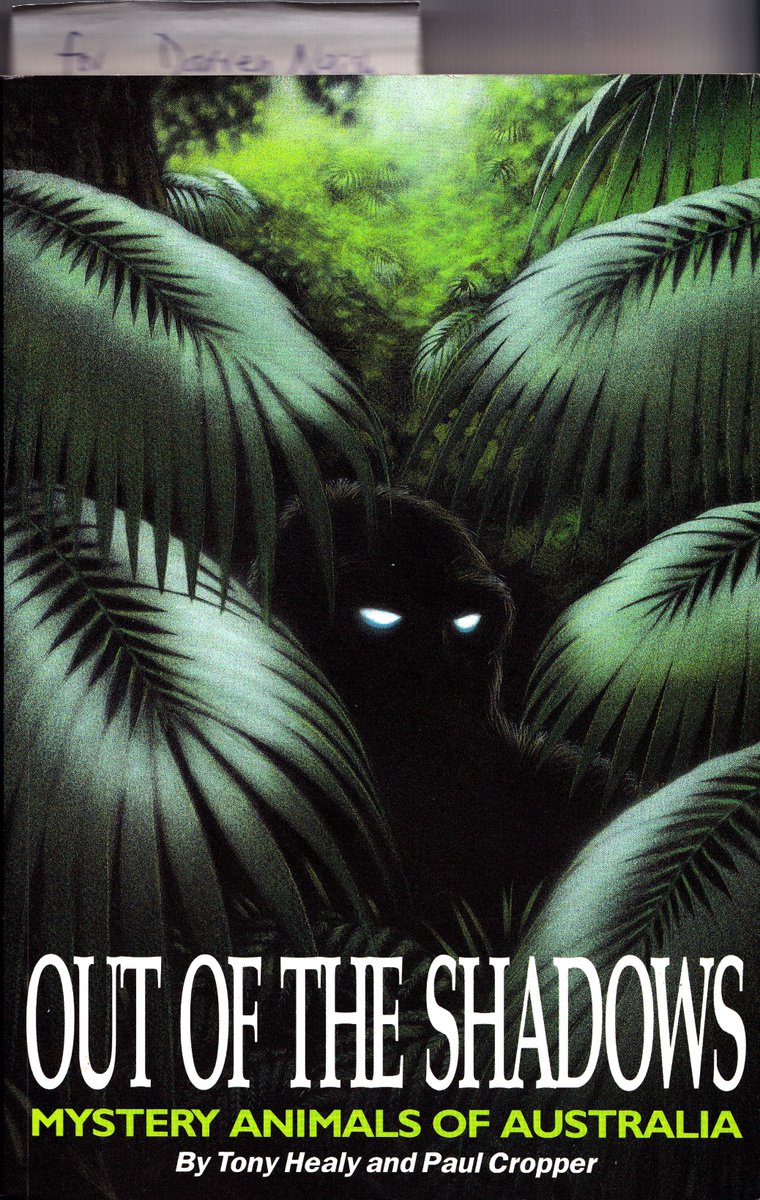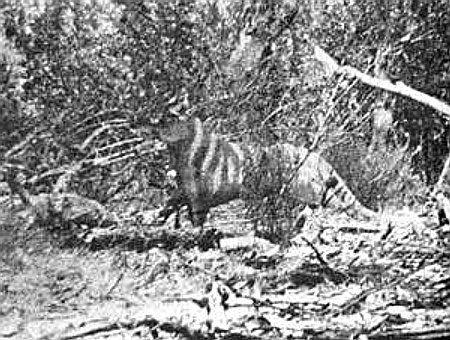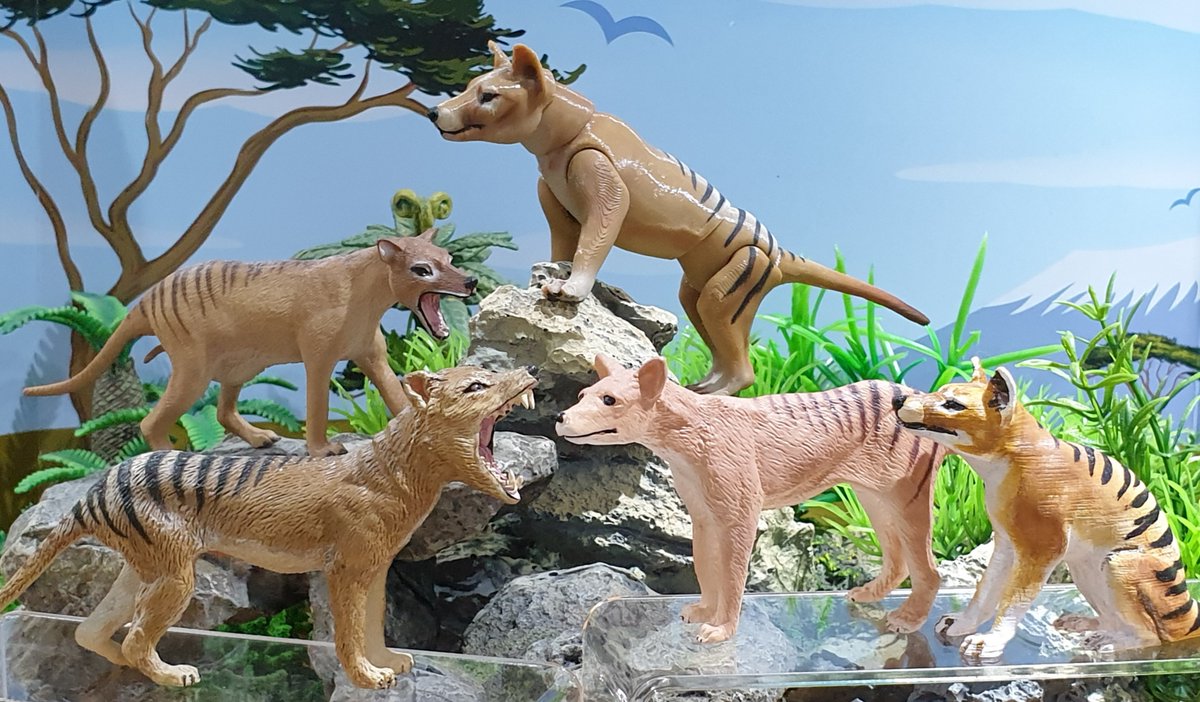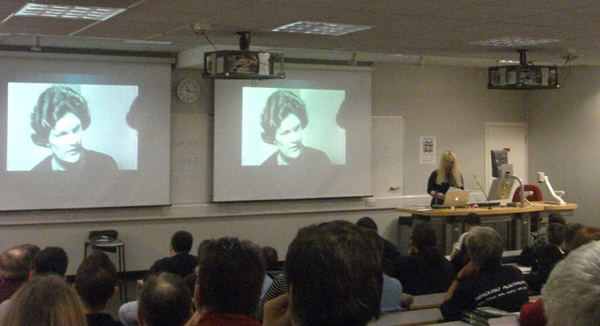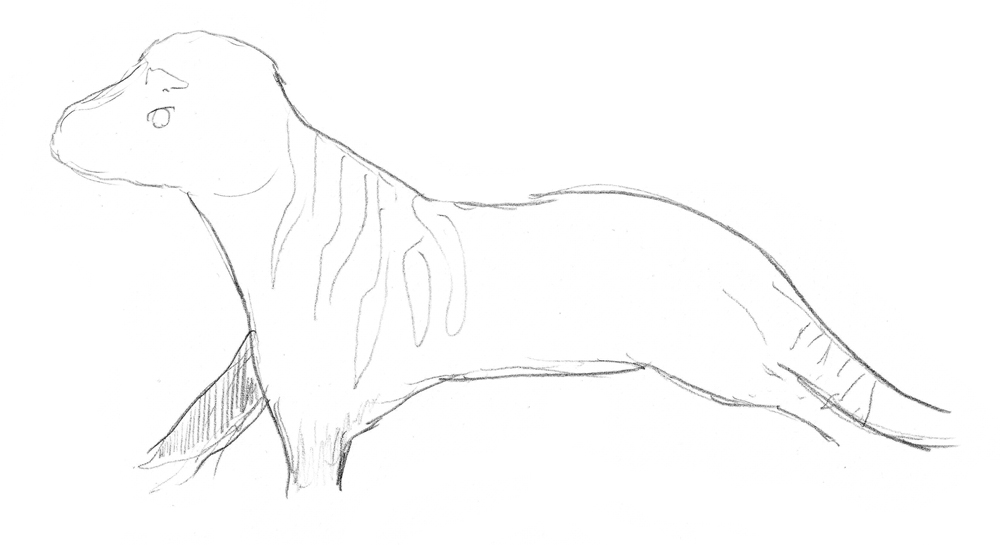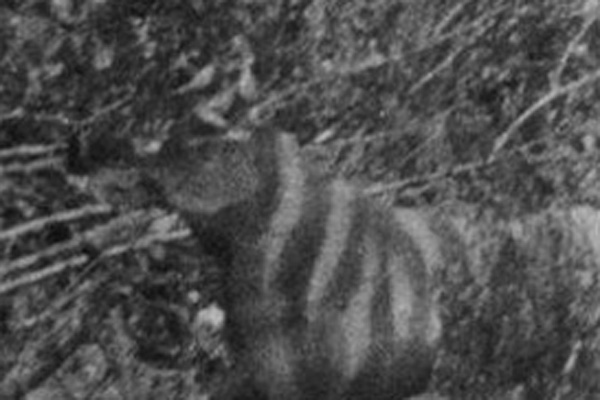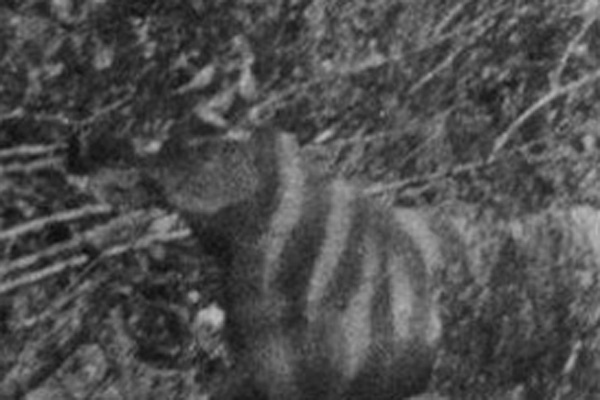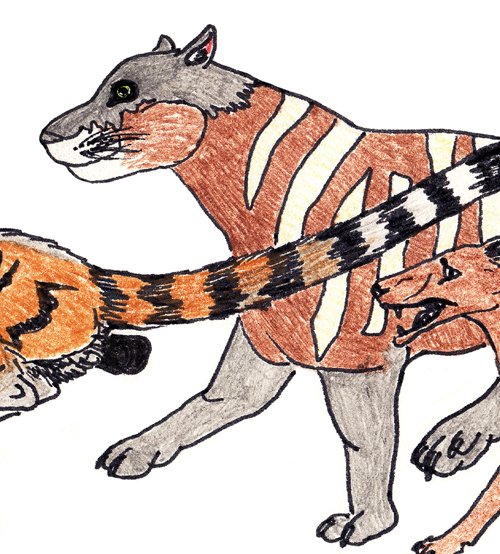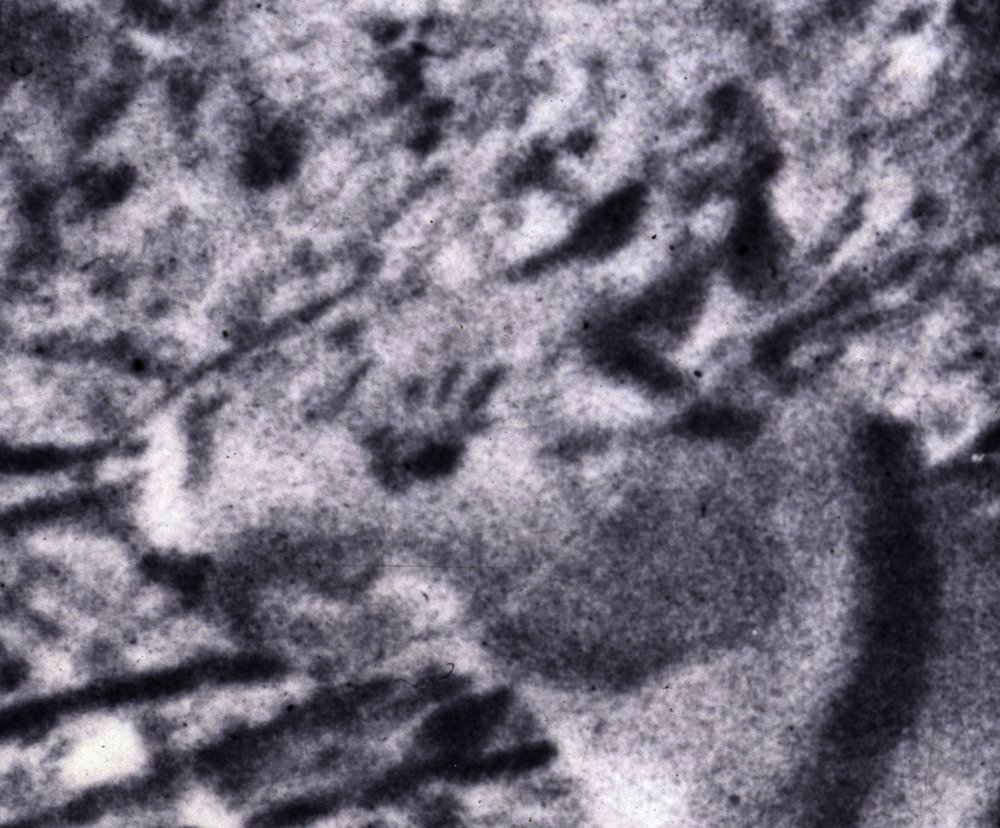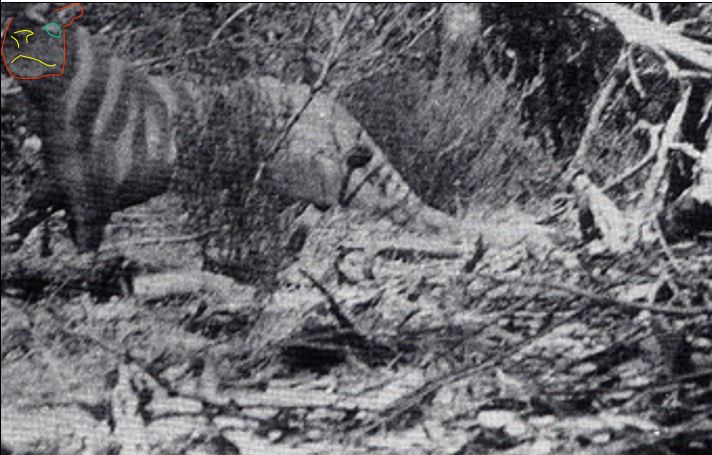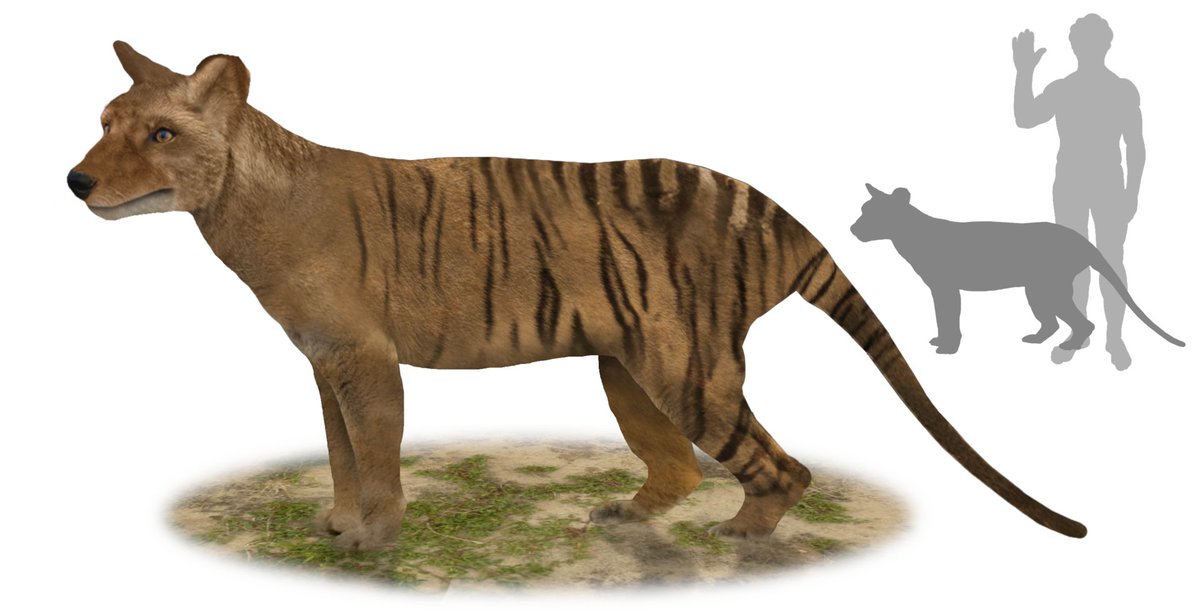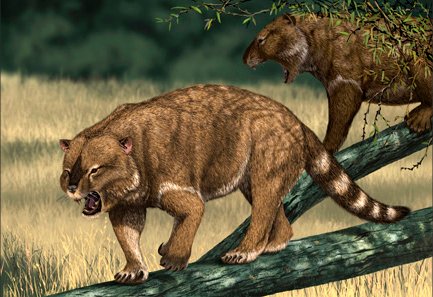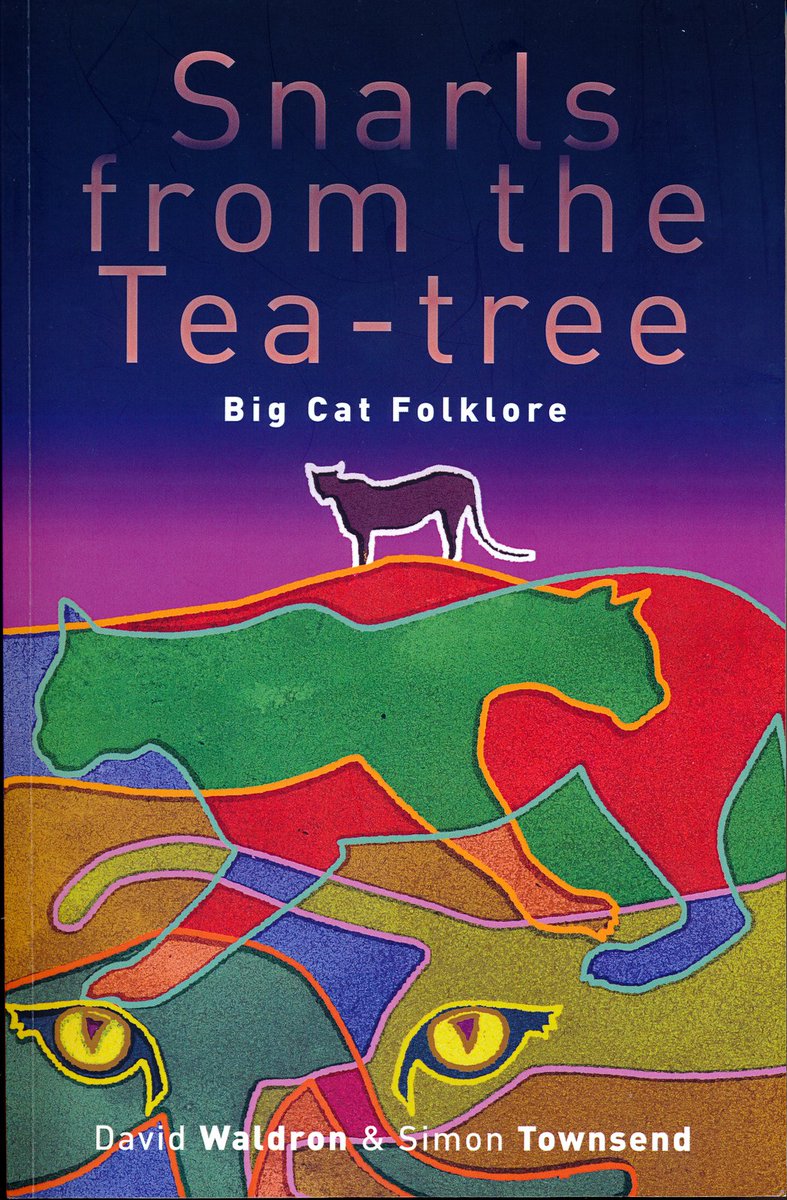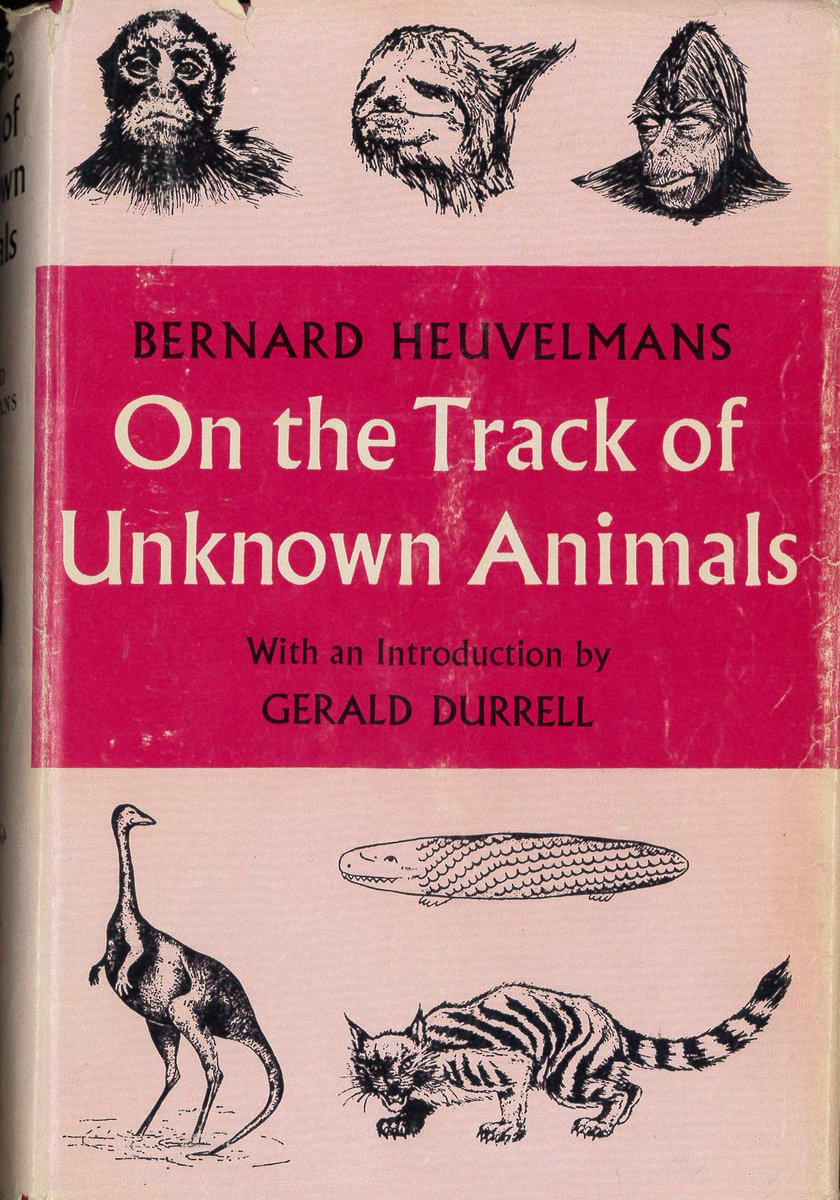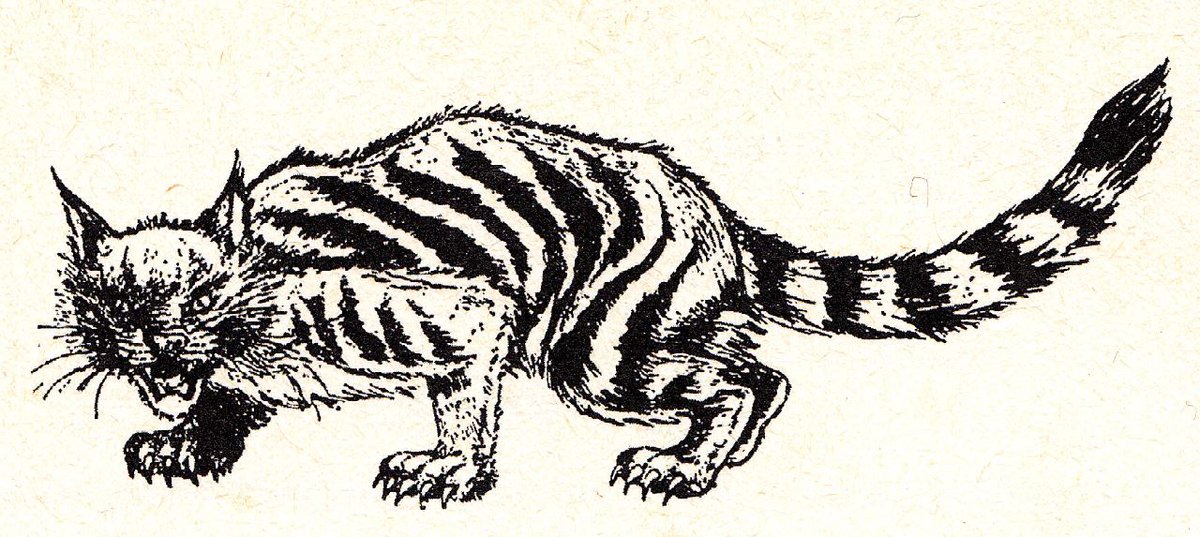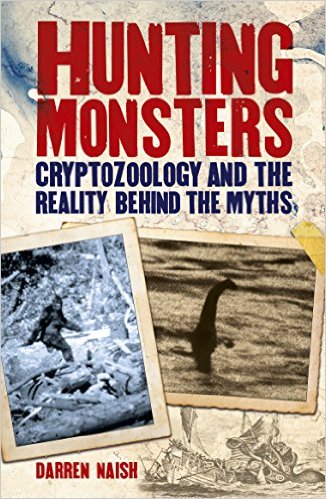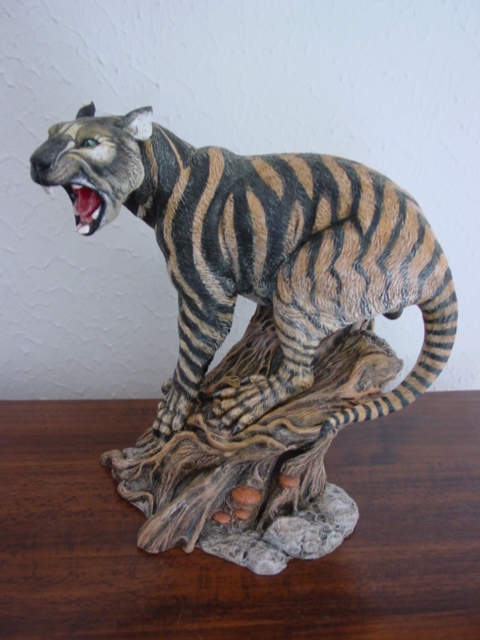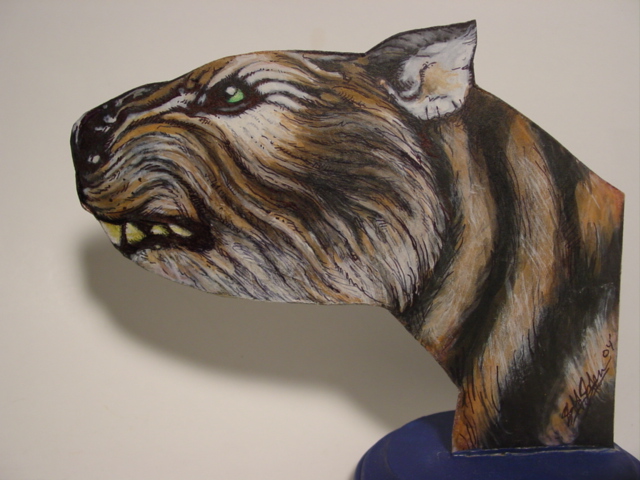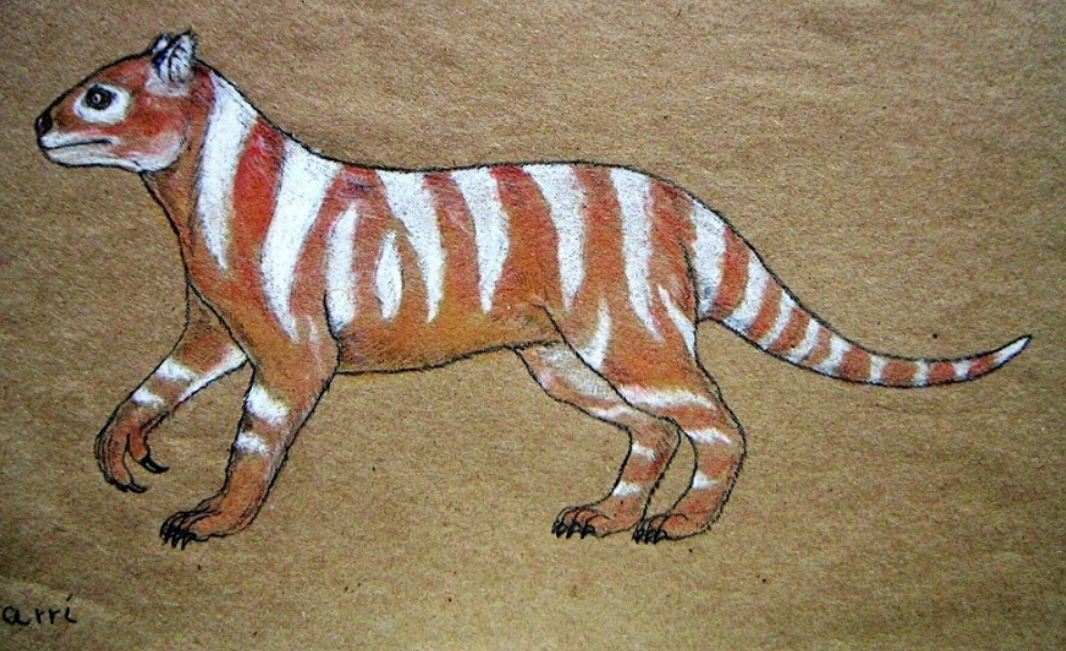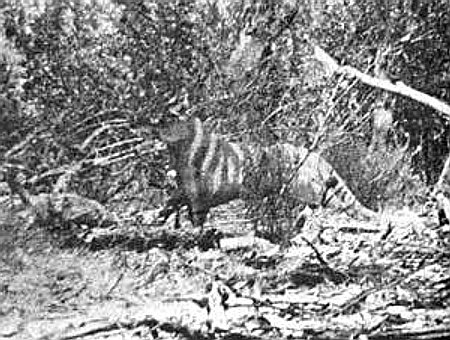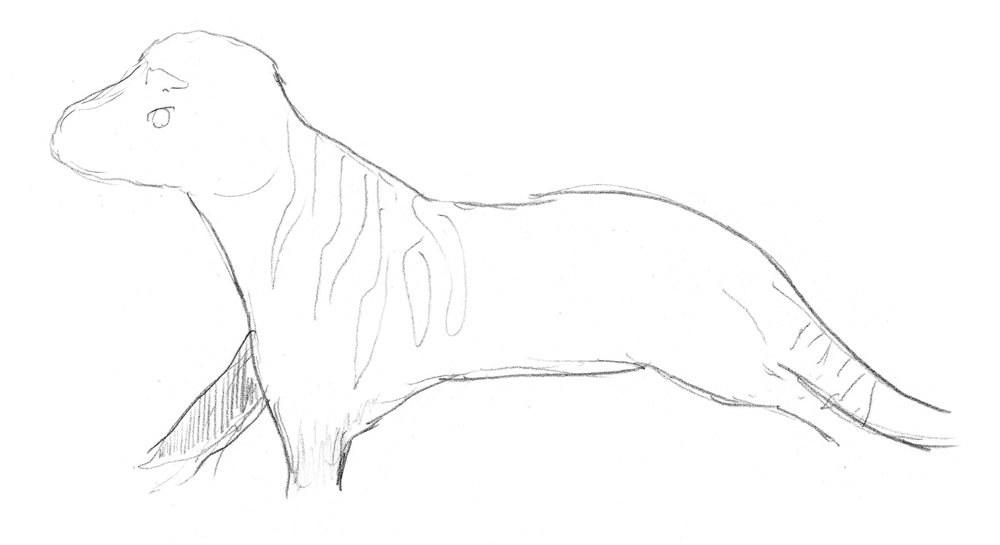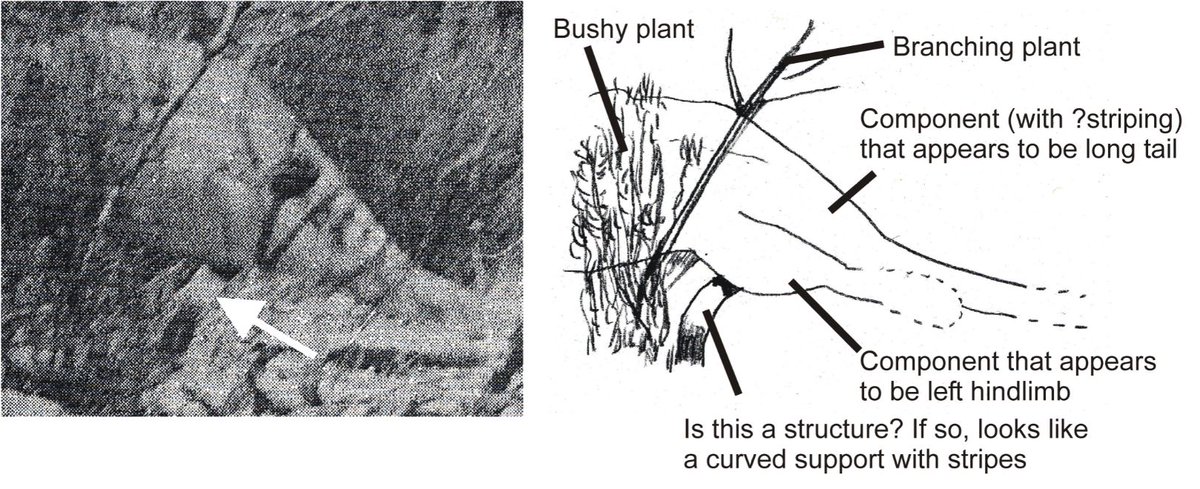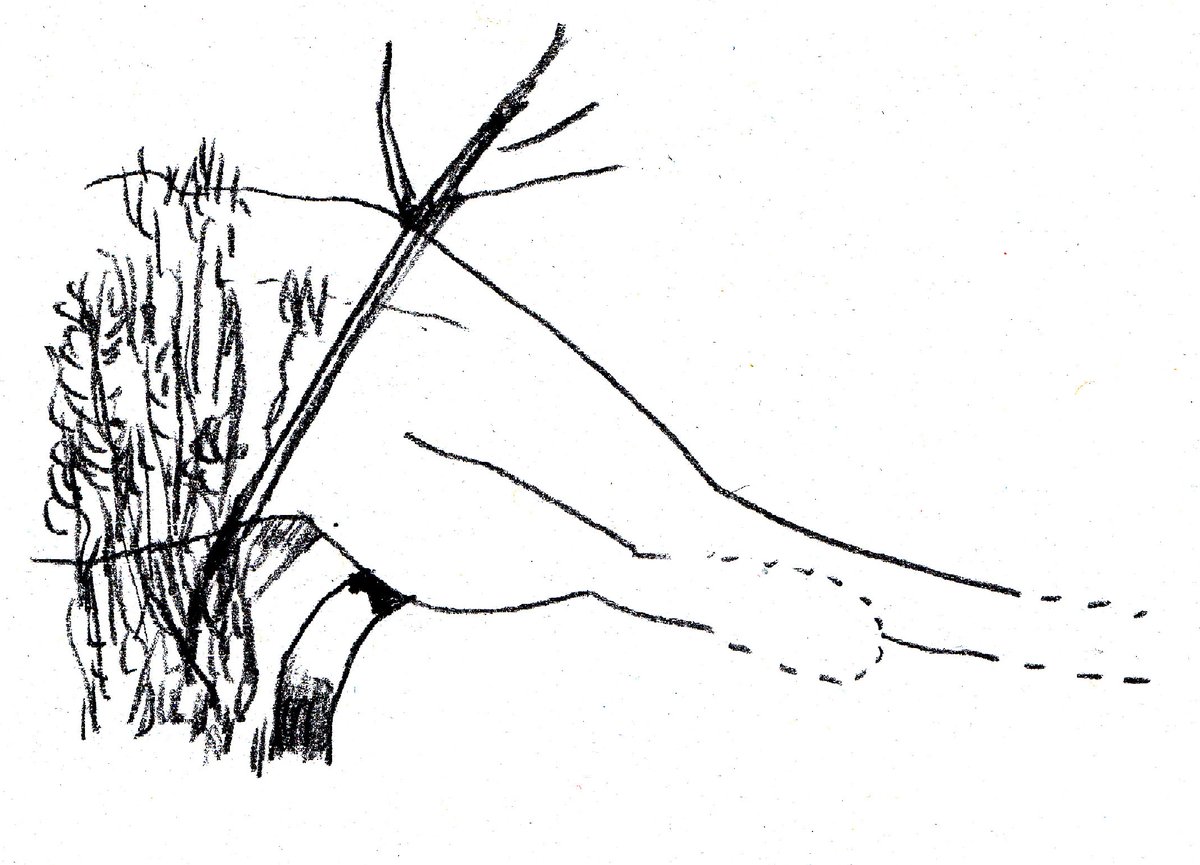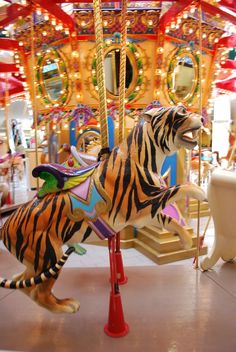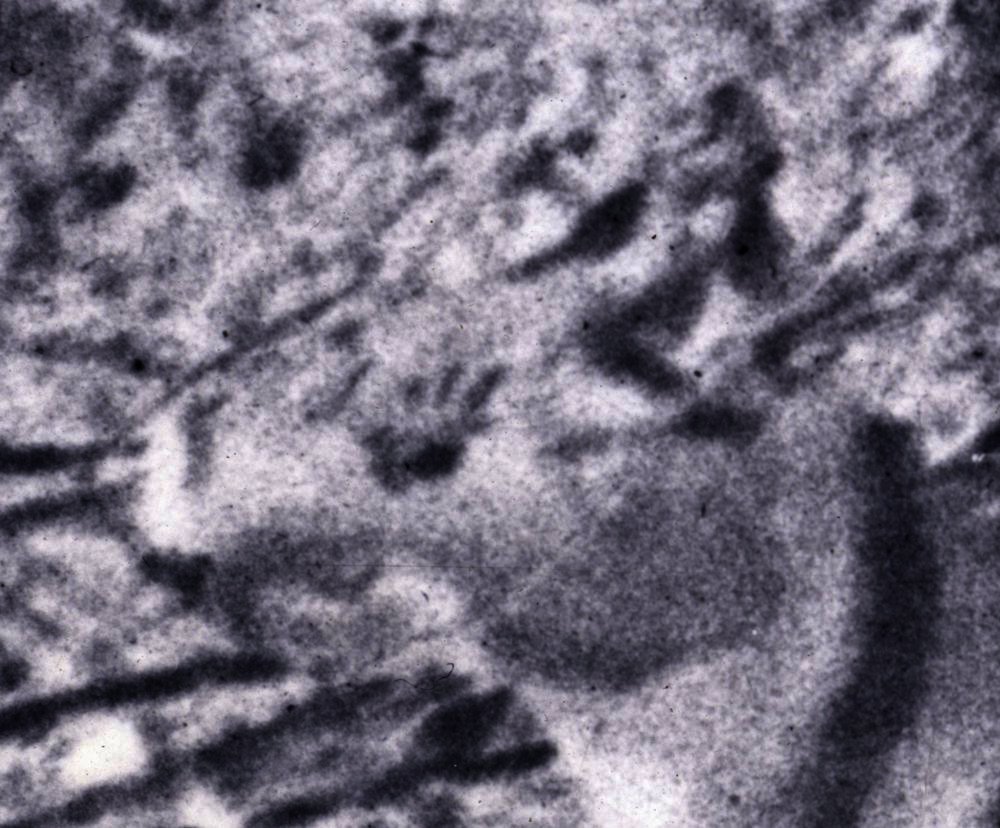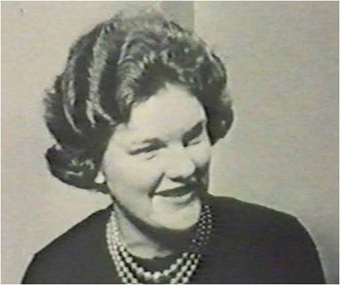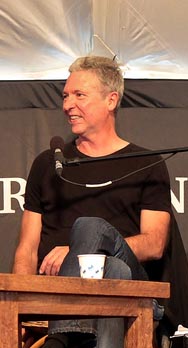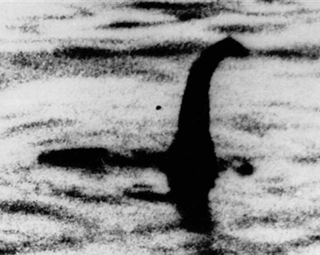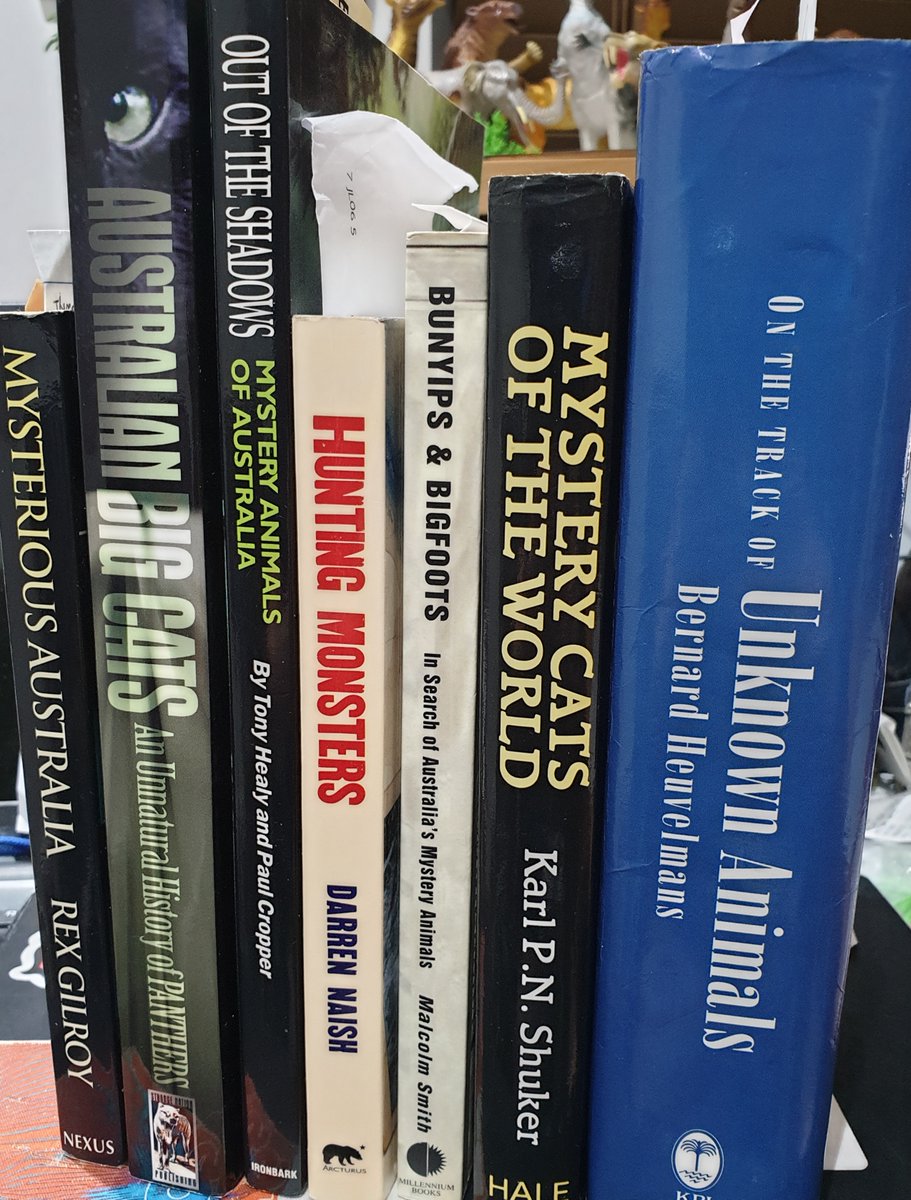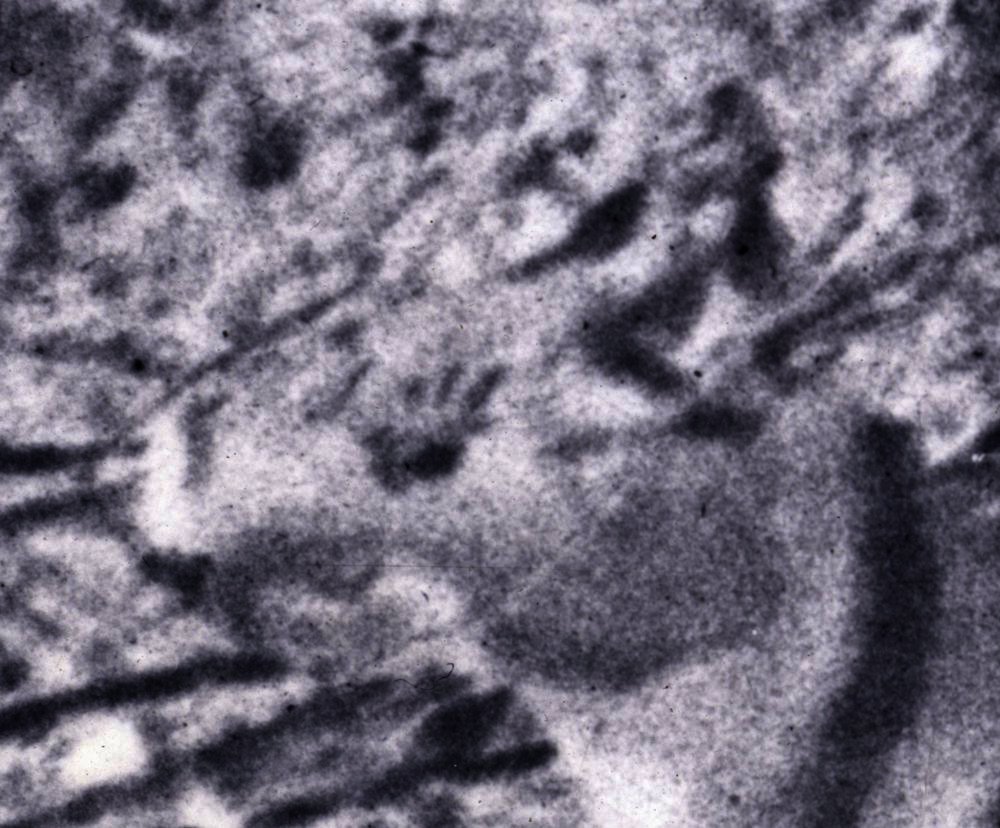Time to embark on another of my #cryptozoology PHOTO MEGA-THREADS (from hereon, #TetZoocryptomegathread). Today: Rilla Martin’s 1964 Ozenkadnook tiger photo, aka the ‘Rilla critter’ photo, from western Victoria, Australia. It's one of my favourite mystery animal photos. Ok...
The photo – a single black and white image – shows a vaguely dog-shaped, long-tailed mammal in the scrub, assumed to be a predatory marsupial of some sort, but one which doesn’t match anything known to science.
The story is that Martin was holidaying with her cousin Bushy (yeah, ‘Bushy’) at Goroke on the Victoria/South Australia border (map from Google maps)...
While driving between Goroke and Apsley, at around midday on an unspecified bright, sunny day, she opted to drive along a dirt road near Ozenkadnook…
Martin caught sight of an unusual striped animal, standing at the side of the road, and stopped the car. Her box Brownie camera was on the front passenger seat, and she was quick enough to snap one photo as the animal ran off (err... read on!).
She was quoted as saying “The sound of the car engine made it alert … within a flash it was gone over the log”…
By September 18th 1964, the photo had made its way to The Wimmera Mail-Times [WMT] (Wimmera is a region in eastern Victoria), and from there to the Sydney Morning Herald, and this is where national interest took off. #cryptozoology
The version of events relayed by WMT is that Martin, once back home in Melbourne, mailed the photo to her cousin, and that they took it to the WMT. Others say she did this herself…
There’s also a claim from 1969 that her cousin developed the film on Martin’s behalf and inserted a photo of a ‘dummy tiger’, but if this is true there’s no backup for it… though read on for other hoax claims which may or may not be connected.
Whatever, the publication of the photo meant that it was evaluated by critics and experts. Because the animal didn’t look quite right and because of the modern Australian lore of ‘tigers’ seen in the bush (read on!), experts were sceptical and denounced it as a fraud.
The fact that it was dubbed a ‘tiger’ means, I think, that it was imagined to be a #TasmanianTiger or #Thylacine, aka Tassie tiger. Here, we need to go on a brief diversion on Australasian #mammals and the history of Australasian #cryptozoology…
The #Thylacine, as you likely know, is/was a superficially dog-like predator marsupial which – prehistorically – occurred on the Australian mainland, Tasmania, and on New Guinea too.
When Europeans invaded Australia, #thylacines had been absent from the mainland for c 3000yrs and present only on Tasmania. Persecution meant that it was soon declining here too: the last known individual (a captive, often said – incorrectly – to be named Benjamin) died in 1936..
As with any extinction, pinning down the date the last wild thylacine died isn't really possible, but it doesn’t seem they persisted beyond the 1930s. However, rumours of their persistence – on the Australian mainland, not just Tasmania – were popular from the 1950s onwards…
In their 1994 book Out of the Shadows (on Aussie mystery beasts), Australian cryptozoologists Tony Healy and Paul Cropper noted their awareness of over 500 ‘mainland thylacine’ reports. #cryptozoology
In fact, the ‘mainland thylacine’ is as much a mainstay of Aussie #cryptozoology as the Yowie, the Bunyip and the Queensland tiger (on which more later), and more people claim – today – to see ‘mainland thylacines’ than all other Aussie cryptids combined.
In fact, the Goroke region where Martin took her photo was already known as a ‘Tassie tiger hotspot’ prior to her 1964 account, and the term ‘Ozenkadnook tiger’ was in use for the local beast before her photo was taken. Her photo was implied to be proof that the beast was real.
The suspiciously high number of ‘mainland thylacine’ encounters means that the thylacine, despite being officially extinct, has been dubbed “the healthiest extinct animal around”…
The mainstream take on these alleged ‘mainland #thylacines’ is that they’re hoaxes or jokes which aren’t to be taken seriously. In cases, the sightings might be confused or mistaken observations of red foxes, perhaps mangy ones with skinny, near-naked tails…
While there was, then, an implication from journalists that Martin’s photo depicted a ‘mainland #thylacine’, the problem is that the animal in her photo doesn’t look like a thylacine at all (read on). Ok, it has stripes, but that’s it. Oh, here are some thylacine toys I have :)
Can we examine the photo more closely, or the negative? NOPE. No negative. No original photo. The WMT lost the photo. Or, at least, they were unable to relocate it when asked about it in recent years…
I heard this from researcher Rebecca Lang when she spoke about the Martin photo at conferences in 2010 (that's Rilla Martin on the screen). I like Rebecca, she has great taste in books…
As for what we _can_ see in the photo, it’s both interesting and annoyingly ambiguous. If we work out which details we can make out _unambiguously_ there’s really not much going on. Here’s a tracing I made which shows what I think I see… So, what is this object?
As ALWAYS with these cases, there are two profoundly different takes on what the photo shows: there’s a ‘literalist’ case which seeks to interpret it as a real animal, and a ‘hard sceptic’ take which assumes from the off that it should be treated as a hoax.
I don’t assume either of these positions but advocate going where the evidence leads, and if you’ve read previous threads you’ll hopefully appreciate that this is the fairest and most fruitful tactic. Anyway…
We’ll start with the ‘literalist’ take. A few writers have assumed that the photo shows an animal. This was my preferred take as a younger person because, frankly, it’s a cool idea and the image shows what, to young me, looked like a real animal.
We see what looks like a tall-shouldered, long-tailed, seemingly muscular, quadrupedal mammal with a moderately long and thick neck and blocky head. There’s the suggestion of four limbs; the two front limbs look to be in a stiff, cantering gait.
And of course there are stripes: big, thick ones across the neck and chest, and slimmer ones on the tail and (perhaps) the rump and back (here's the cropped, darkened version of Martin's photo which appears in some books)...
The stripes are weird: it looks as if the animal’s ground colour is dark, and the stripes are light, the opposite of what we normally see in animals. Is this really a novel anatomical condition, or some sort of trick of light and shadow? Both suggestions have been made.
The animal is obviously shown in a scrubby, forest-edge location, with substantial clutter involving what looks like dry shrubs, small bushes, sticks and leaves and a downed log or two.
Some of these plant parts partially obscure the creature from view, and they totally cover its feet, the middle of the body and much of the hindlimbs and tail.
The shrubs close to the head are of similar hue to the head and mean that the head’s outlines are ambiguous and difficult to make out with certainty…
A pale line that _might_ mark the upper border to the head is visible, but there are also lines that, interpreted as edges, could make the head long and low.
Some people think they see a dog-like profile, small ears at the very back of the head, deep jowls, a pointed rhinarium (the naked bit of the nose in so many mammals) and eyes high up and just behind a bony brow region. Here’s my artistic depiction of this interpretation…
Others see a different profile, with large, backswept ears, a low set eye and the suggestion of one or more big teeth at the front of the mouth...
Artist and cartoonist Ethan Kocak flipped the image into negative, revealing new details, and illustrated what he could make out, look… The big ‘eyelashes’ which are obvious in negative view are especially worryingly, since they don’t look at all real..
Researcher Jeff Johnson has suggested that we’re seeing a dog-like head in three-quarters view, turned toward the viewer, and proposed this interpretation…
A colour reversal of the photo indicates that the upper half of the ‘head’ is vegetation, in which case it’s perhaps supposed to have a low, shallow head, not the deep, dog-like one I mentioned above.
Martin said that animal had a pig-like snout in interview, which is odd and doesn’t match what seems to be present in the photo at all.
The problem is that none of these profiles match any known animal, nor does the colour scheme. The tall shoulders (taller than the hips) aren’t right for a thylacine, and the only thing they look right for is a tall-shoulder dog like a Doberman...
That long tail is at odds with a dog identification though. The stripes are also wrong for a #thylacine (thylacine stripes are slim, numerous, black, and over the posterior half of the animal, not the neck and shoulders).
If this tall-shouldered, weirdly-striped look isn’t right for a thylacine, could Martin’s animal be another sort of mammal? A suggestion made by amateur researchers is that it could be an unusually proportioned thylacine of a sort we otherwise know about nothing about…
Maybe, they’ve said, this is evidence that the large fossil thylacine Thylacinus potens is alive and well (reconstruction of T. potens by Tim Bertelink). This is a fairly desperate explanation which lacks any backing from other evidence, so I have to say no on its being likely.
A more popular idea is (prepare to be surprised, unless you’re familiar with the cryptozoological literature already…) that Martin’s animal might be a member of a marsupial group also thought extinct: could this be a living thylacoleonid, or marsupial lion?
Thylacoleonids are a fossil group related to wombats, koalas and possums, the largest species of which (like Thylacoleo carnifex) were leopard or lion-sized. These are enigmatic animals which we’re still unsure about – they lack modern analogues (art by Jaime Chirinos). But…
… there's been a tendency to imagine them as ‘marsupial analogues’ (ecologically and behaviourally) of leopards or even lions. Be aware that this view is likely totally wrong. Whatever, you need it as the background for the following…
During the late 1800s, European colonists in Queensland cultivated another ‘Australian tiger’ myth. A few people claimed to see giant, striped cat-like mammals, a few footprints said to be left by the beast were reported…
… and the idea that Australia might be home to a scientifically novel ‘lion’ or ‘tiger’ arose. See David Waldron and Simon Townsend’s 2012 book Snarls from the Tea-Tree for an analysis of this phenomenon, it’s a great book.
This view was taken seriously enough that some mammalogists included the ‘Queensland tiger’ – supposedly a new, big, striped predatory marsupial (art by Neave Parker) – in fieldguides (famously, it’s in Le Soeuf and Burrell’s 1926 The Wild Animals of Australasia)…
The Queensland Tiger was brought to wide international attention thanks to Bernard Heuvelmans 1958 book On the Track of Unknown Animals (first published in French in 1955), the most influential book on mystery animals ever published…
Therein, Heuvelmans discussed the Queensland tiger as a real unknown animal, featured a reconstruction of its life appearance, and suggested that it might show Thylacoleo to be alive and well in the 20th century. This then became a popular idea in the cryptozoological literature.
I should add that the evidence for the reality of the Queensland tiger was, sadly, never at all good. As I discuss in my #HuntingMonsters book...
... the key sightings are vague, the great ‘classic’ sighting (that reported by Australian writer Ion Idriess in 1922) was obviously intended as an “imaginative yarn” (to quote http://idriess.com.au )…
… the footprints don’t constitute good evidence (for reasons too complex for me to go into here: see #HuntingMonsters), and sightings petered out post-1950s…
Whatever, the implication that thylacoleonids might be alive in Australia inevitably led to the suggestion that Martin’s animal might be such a beast. It didn’t match a thylacine, but perhaps it _did_ match a Thylacoleo…
The tall, muscular forequarters, slim tail and possibly blocky head all look consistent with such an identification. This was hinted by Karl Shuker in his 1989 book Mystery Cats of the World (albeit only in a caption for Martin’s photo, not the main text)...
And, since then, a few other people have pushed the thylacoleonid proposal. A few people have manipulated Martin’s photo to show how a thylacoleonid can be ‘identified’ within it…
And some artists have deliberately depicted Thylacoleo with a pattern and colour scheme matching what’s shown in Martin’s photo. The model here is (I think) by Jeff Johnson, the painting by Markus Bühler…
Could the Martin animal be a living thylacoleonid? That would only work if thylacoleonids really are alive. And while that’s a cool and exciting idea, it is devoid of any support and just has to be rejected, sorry.
So we now come to the idea that the photo could be a hoax. As we’ve seen, this idea was promoted right from the start. But is there proof, of any sort, that might _show_ that it was a hoax?
Some people think that the animal has a ‘flat’ feel which shows that it’s made of card or wood. Hmm, maybe, maybe not. As noted earlier, the plants and debris in the photo look very conveniently positioned, as if they might be hiding details which ruin the object’s shape….
I’m also bothered by an unusually prominent object near the animal’s hips which sometimes looks to me like a supporting pole of some sort. I made this diagram depicting what I think I see here, but this could well be pareidolia…
Martin’s brother insisted in 1999 that he and his family were simple people from the sticks, with no knowledge of how to fake a photo and no desire to. Ok, fair enough.
But there have been repeated claims that the object might not be an animal, but a cardboard cut-out, a taxiderm specimen (of what?), or a MERRY-GO-ROUND TIGER like those shown here. This idea was posted as a comment on my blog, but the comment has been lost due to hosting issues.
Some circumstantial evidence which might lend support to the hoax idea. Firstly, the circumstances of photography are difficult to believe. Supposedly, Martin was driving along, saw an animal, stopped the car, grabbed the camera, and took the photo as the animal was running away.
This chain of events is by no means _impossible_, but it strikes me as unlikely, because animals are uncooperative when you’re trying to photograph them, especially from a moving vehicle, especially with an old-fashioned camera.
Secondly, colour-reversed versions of the photo reveal very odd details. Remember the giant ‘eyelashes’ mentioned earlier? They look like features painted onto to a model or picture, not genuine bits of anatomy.
Thirdly, Rilla Martin was filmed, and I have a copy of the interview (kindly provided by Australian cryptozoologist and author Rebecca Lang). During the interview, Martin purses her lips, smiles and avoids eye contact at moments which _suggest_ deceptive behaviour…
When reading body language, you’re advised to develop an understanding of that person’s ‘baseline’ behaviour, and I can’t pretend to really have that for Martin, so take this with a substantial pinch of salt. I could be mis-reading her entirely.
Fourthly, there’s an “I was the person who dunnit!” story from March 2017, which _might_ show that it really was a hoax, though read on and be sceptical…
According to the story, published in The Weekend Australian by Canberra-based columnist Jack the Insider (real name Peter Hoysted), the thing was a hoax created by cartoonist Bill Leak, who died that month (Bill Leak photo by Gabby Watson)…
The Insider piece claimed that Bill, his dad and a mate “fashioned a thylacine shape out of cardboard” and took a box brownie photo of it in the local scrub. They’d been inspired by Tassie tiger stories from the Goroke region.
As is usual for these stories, it then ‘grew legs’, and won widespread interest and coverage. It was at this point that the Leak family opted to go quiet on the story and make alibis. They hid the cardboard tiger away and later destroyed it.
Now, that’s all very interesting, but how does it link to Rilla Martin? The Insider story didn’t even mention her. I asked Hoysted directly, and his guess was that Martin somehow agreed to take credit for the photo but that he wasn’t aware of any evidence for a direct link…
… which doesn’t exactly fill me with confidence about the veracity of Leak’s story...
In contrast to that famous ‘confession’ story on the Wilson #LochNessMonster photo of April 1934 (which is backed by several lines of evidence and a paper-trail: see my thread on it here… https://twitter.com/TetZoo/status/1280597569131995139), the Bill Leak story has a ‘deathbed confession’ vibe to it...
... and so far lacks any backup. I’d like it if it were true, but we should be sceptical of it.
And that just about wraps up everything worth saying about this photo, in my opinion. I’ve written about it a bunch of times…
I wrote about the case at #TetZoo back in 2010 ( https://web.archive.org/web/20120701165438/http://scienceblogs.com/tetrapodzoology/2010/08/18/rilla-martins-1964-photo/) where, I’m pleased to say, there’s a very lengthy comments section with tons of interesting ideas… #cryptozoology
I then reviewed it again, with a bit of new information, in 2016… https://blogs.scientificamerican.com/tetrapod-zoology/rilla-martin-s-ozenkadnook-tiger-photo-revisited/ ….
... and I again wrote about it after the Jack the Insider story broke in 2017 … https://blogs.scientificamerican.com/tetrapod-zoology/the-ozenkadnook-tiger-photo-revealed-as-a-hoax/ #TetZoo #cryptozoology
All books which cover Australian mystery animals – all of which I consulted while putting this thread together – discuss the case, but don’t do much more than mention it in passing and say that it’s enigmatic.
What could be done to investigate the story today? Well, not much. It’s probably too late now to interview members of Rilla Martin’s family (or Rilla herself, she might still be alive), but that’s where I’d start…
My conclusion is that the photo was a hoax. This is because the animal doesn’t look right anatomically, because the circumstances of photography AND the photo’s composition are suspicious, and because the hoax rumours suggest local knowledge of what really happened.
This is where our story ends, thanks for reading – I’ll keep doing these #TetZoocryptomegathread things as long as people keep reading them…
I might compile them into a book if there’s sufficient incentive (hint hint). Please buy my books if you’re interested in supporting me ( https://www.amazon.co.uk/Books-Darren-Naish/s?rh=n%3A266239%2Cp_27%3ADarren+Naish), I also have a patreon where you can see my in-prep projects ( https://www.patreon.com/TetZoo )

 Read on Twitter
Read on Twitter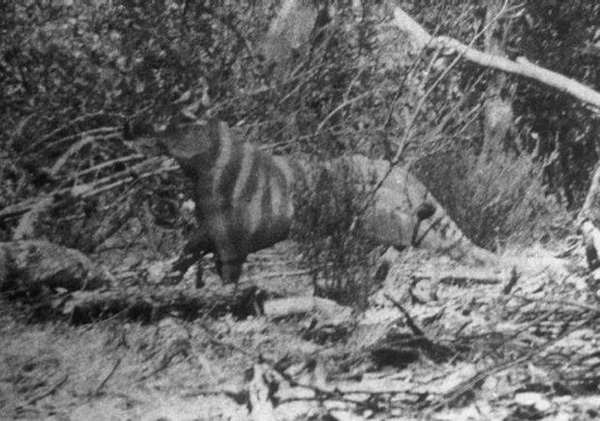
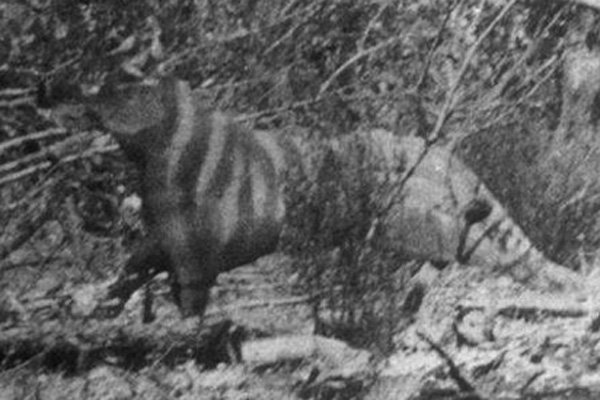
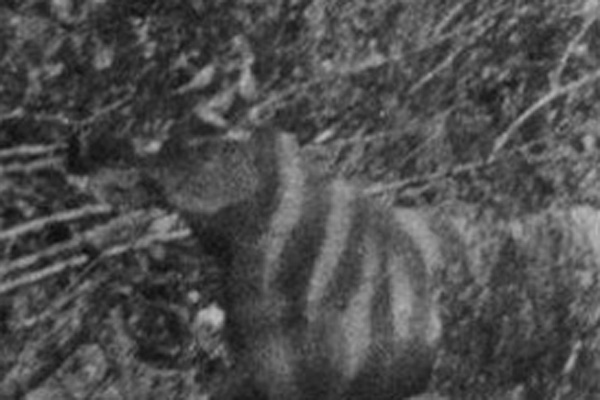
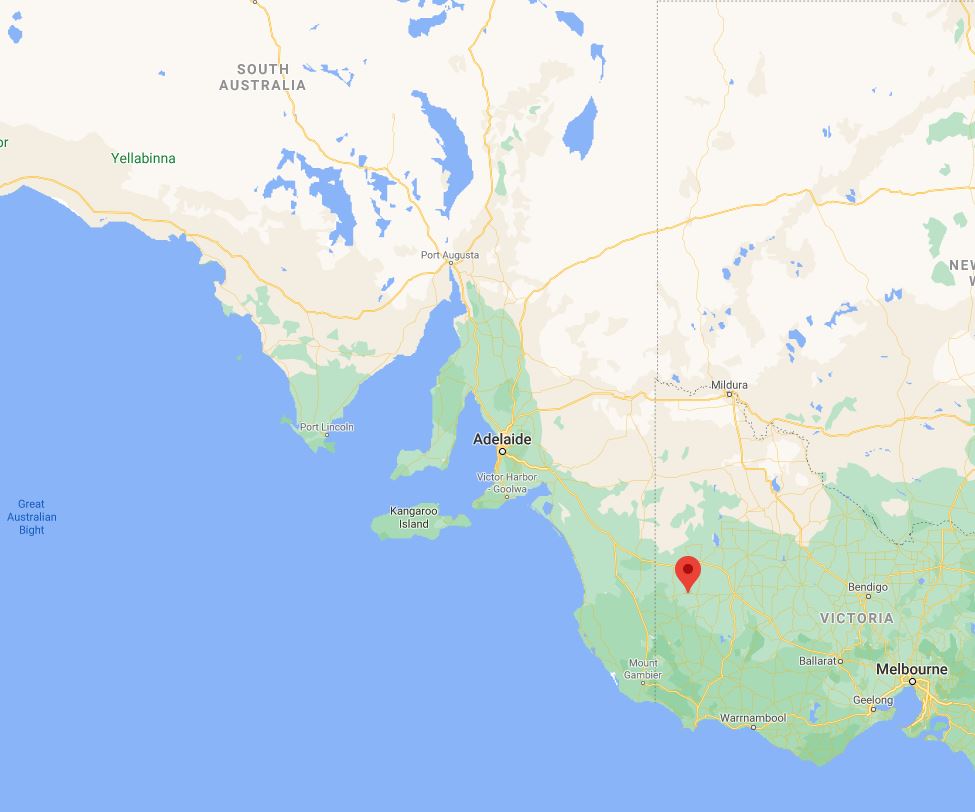
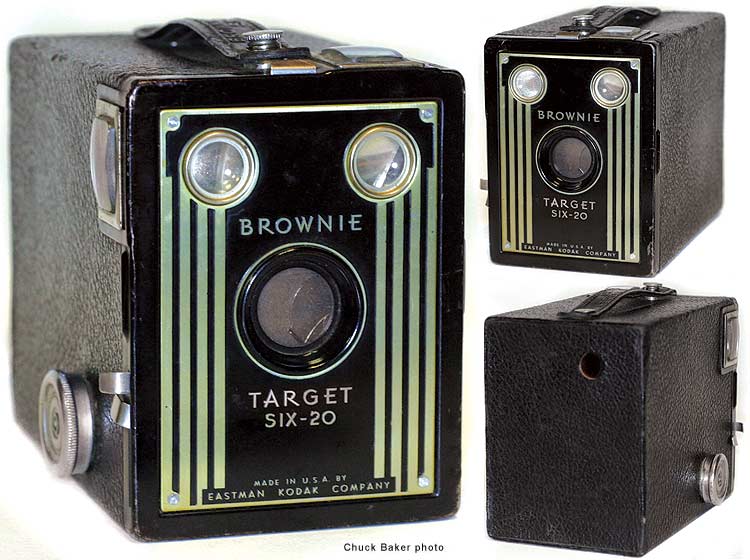
![By September 18th 1964, the photo had made its way to The Wimmera Mail-Times [WMT] (Wimmera is a region in eastern Victoria), and from there to the Sydney Morning Herald, and this is where national interest took off. #cryptozoology By September 18th 1964, the photo had made its way to The Wimmera Mail-Times [WMT] (Wimmera is a region in eastern Victoria), and from there to the Sydney Morning Herald, and this is where national interest took off. #cryptozoology](https://pbs.twimg.com/media/EggEPK7U4AE2HmA.jpg)
